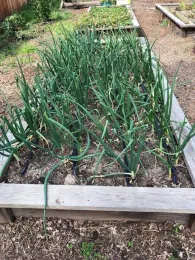Help Desk
Question: What are some winter garden chores that we can do in the shop?

It is also a good time to visit our garden tools to make sure they are ready for spring use by conditioning and sharpening. I keep a can of boiled linseed oil available to rub down wooden handles on shovels, rakes, hoes, and wheelbarrows. If there are raised or splintered areas, they should be sanded with fine grit 120 sandpaper, either by hand or with an orbital sander, before applying the oil. This oil will help preserve your handles and make them last longer and they will feel better in your hands if smooth. Kitchen vegetable oil can be used on the metal tool surfaces to keep them shiny and prevent rust after cleaning with wire brush or steel wool.
Sharpening shovels and hoes can be done with a grinding tool or more slowly with a file. Pruners and loppers can be sharpened with several kinds of tools. If there are nicks or severely dull blades, a file can be used to take off the dulled parts. A finish to that and/or if a touch up sharpening is required it can be done with a stone or a carbide tool which can put a fine edge on a straight blade or knife. For more information on sharpening tools, click here.

I made raised beds years ago using some free beams from an old barn that was torn down. This wood was not rot resistant and in a few years it rotted. Subsequently, I used cinder blocks to make raised beds that were rot proof. There are now plastic and metal beds available that are also rot-proof and maybe rustproof. However, if you like a more aesthetic look, you can use redwood or cedar and create raised beds that are longer lasting. At my home, there are six 4ft x 12ft cedar raised beds that are doing well, and are pleasant to work in, and they have irrigation lines established as well for easy irrigation.
